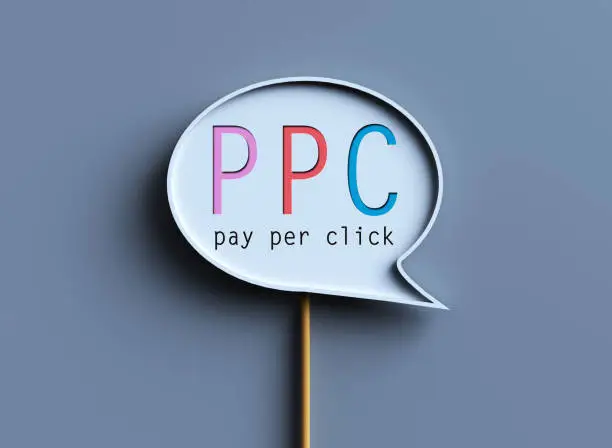Google Ads vs. Bing Ads: Which Delivers Better PPC Results?
When it comes to online advertising, businesses often find themselves torn between Google Ads and Bing Ads. These two platforms...

When it comes to online advertising, businesses often find themselves torn between Google Ads and Bing Ads. These two platforms dominate the pay-per-click (PPC) landscape, but they offer different opportunities, audiences, and strategies. Understanding which one delivers better results depends on your specific goals, budget, and audience behavior. In this article, we’ll break down everything you need to know about these two PPC giants so you can make an informed decision.
Audience Reach and Market Share
Let’s start with the obvious: Google Ads has a far larger reach. Google commands over 90% of the global search engine market, making it a behemoth when it comes to connecting with a massive audience. If your goal is visibility and volume, Google Ads is the obvious choice.
On the other hand, Bing (now Microsoft Advertising) shouldn’t be dismissed. Bing powers not just the Bing search engine, but also Yahoo and AOL. It holds about 6-8% of the global search market and a much larger share in certain regions and demographics, especially among older audiences and desktop users in the United States.
Pros of Google Ads:
- Extensive reach
- High volume of searches
- Access to YouTube and Display Network
Pros of Bing Ads:
- Less competition means lower CPC
- Often higher CTR for specific niches
- Integrated with Microsoft products like Cortana and Office
Cost-Effectiveness and Budget Efficiency
One of the major considerations in any PPC campaign is how much you’re spending versus what you’re getting in return. Google Ads, due to its competitive nature, tends to have a higher cost-per-click (CPC). Businesses often find themselves bidding aggressively to get top positions.
In contrast, Bing Ads offers a more cost-effective alternative. With lower competition and similar targeting features, advertisers can achieve comparable results at a lower CPC. This can be especially helpful for smaller businesses with limited budgets.
Google Ads Cost Benefits:
- Suitable for high-budget campaigns
- Delivers fast, scalable results
Bing Ads Cost Benefits:
- Ideal for small to mid-sized businesses
- Offers better ROI in niche markets
Targeting Capabilities and Customization
Both platforms offer advanced targeting options, but there are some differences worth noting. Google Ads provides unmatched granularity when it comes to audience targeting. From device type and geographic location to detailed keyword planning, it’s a powerhouse for data-driven marketers.
Bing Ads, while not as intricate as Google Ads, still offers solid targeting features. It also provides the option to import your Google Ads campaigns directly, which simplifies management. Furthermore, Bing Ads lets you target based on LinkedIn profile data – a unique advantage for B2B marketers.
Google Ads Targeting Strengths:
- Advanced demographic targeting
- Detailed keyword match types
- More data for optimization
Bing Ads Targeting Strengths:
- Integration with LinkedIn for professional targeting
- Strong performance on desktop devices
- Better performance in specific age groups
Conversion Rates and User Behavior
Conversion rates can vary based on industry, ad quality, and landing page optimization. However, many advertisers find that Bing Ads tends to yield higher conversion rates, particularly in certain niches like finance, legal, and healthcare. This is often due to the older, more affluent user base that tends to browse via desktop.
Google Ads still provides excellent conversion potential but requires more rigorous optimization due to the higher competition and broader audience. Quality Score plays a huge role in visibility and cost, making continuous optimization necessary.
Google Ads Conversion Highlights:
- Huge user base equals more potential conversions
- Strong performance in retail and e-commerce
Bing Ads Conversion Highlights:
- Higher conversion rates for certain industries
- Better engagement on desktop platforms
Ease of Use and Interface Comparison
Both platforms have robust dashboards, but Google Ads comes with a steeper learning curve. It offers more features, tools, and settings, which is great for seasoned marketers but can overwhelm beginners.
Bing Ads has a more user-friendly interface and is often seen as a simpler, more accessible entry point for PPC newcomers. That said, it still offers enough tools for professionals to build effective campaigns.
Google Ads Usability:
- Powerful tools for experts
- Steep learning curve for new users
Bing Ads Usability:
- Simple and intuitive
- Smooth import from Google Ads
Final Verdict: Which One Should You Choose?
There’s no one-size-fits-all answer. If you’re a business looking for high traffic, extensive reach, and advanced targeting, Google Ads is likely your best bet. But if you’re seeking a lower-cost alternative with strong ROI and simpler management, Bing Ads might be the way to go.
A smart PPC strategy often includes both platforms. By diversifying your advertising efforts, you can tap into different audiences and maximize your ROI. Testing both platforms and analyzing performance metrics will provide the insights needed to tailor a successful PPC campaign.
Whichever platform you choose, consistent optimization, strong ad copy, and high-quality landing pages are key to delivering results.
If you’re unsure where to start or need help navigating the world of PPC, working with a team that specializes in PPC Management Services can be a game-changer.
Unleash the full potential of pay-per-click advertising with Ringo Media comprehensive PPC management services. Drive immediate traffic, boost conversions, and get the most out of your advertising budget.
click here to visit website for more interesting collection of articles


